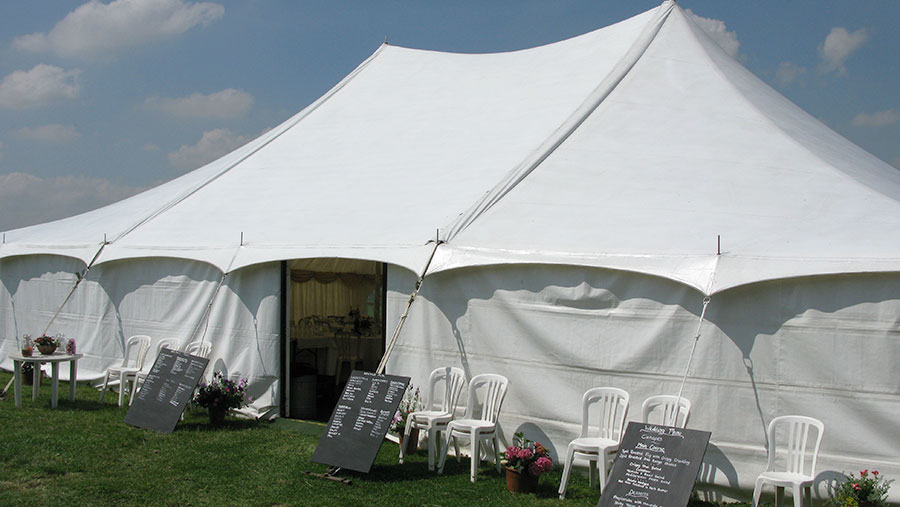Five tips when using marquees for calf housing
 © Victoria Simpson/REX/Shutterstock
© Victoria Simpson/REX/Shutterstock A marquee provides a good temporary solution for farmers seeking inexpensive calf housing for a short period, but there are a number of things to consider, advises vet David Staak.
1. Good site drainage is essential
Siting a marquee on hardcore will prevent a build up of moisture and ammonia within the structure.
“Hard core provides a good substrate for drainage and will keep the area firm and dry under the calves,’’ says Mr Staak, of the Market Hall Veterinary Practice, St Clears. “If the marquee is placed on a grass field, then wood chips and straw could also be used.’’
See also: Farmer hires marquee to house dairy calves
2. Calves should be given enough space
He recommends a minimum area of two square metres per calf. Calves can be housed in individual or group pens to allow for ease of management. “Pens of 10-15 calves are usually more practical for block calving herds,’’ Mr Staak suggests.
3. Ventilation
Mr Staak says one of the benefits of a marquee is the ventilation can be controlled by opening up the side panels to let more fresh air in on warm and humid days. Large straw bales can also be strategically placed to provide shelter from draughts and to improve comfort.
“It is important to provide plenty of straw bedding so that calves can nest themselves deep within the straw,’’ says Mr Staak. “If the marquee is still too draughty then additional comfort can be provided by the use of calf jackets to prevent the calves from using too much energy on staying warm.’’
4. Marquee size
Mr Staak recommends using a long narrow marquee over a large square one as it means cross-contamination can be avoided and it reduces the sharing of air space.
It also allows the marquee to be filled up from one side, avoiding older calves spreading infection to newly introduced calves.
5. Cleanliness
Once the marquee is taken down, waste material should be removed and the are disinfected to remove bugs, says Mr Staak.
